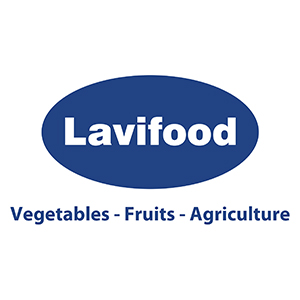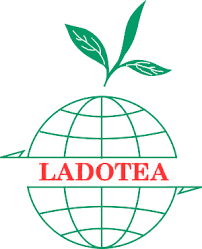- Giới thiệu
- Nhóm Công tác
- Tin tức
- Thông tin về FTA
- Tài Liệu
- Sự kiện
- Liên hệ
Agricultural exports totaled USD 18 billion in the first four months of the year
After four months, agricultural exports reached USD 17.9 billion, an increase of 15.6 percent year over year. Agricultural exports amounted to USD 4.8 billion in April alone.

Five agricultural commodities exceeded USD 1 billion in export value
According to MARD, five agricultural lines acquired more than USD 1 billion in export value in the first four months of the year, including coffee, rice, vegetables, shrimp, and wood products. Additionally, several commodities saw a rise in export value year over year, including coffee, rubber, pepper, cassava and cassava products, pangasius, shrimp, and wood and wood products.
In terms of exports, from January to April, Vietnamese agricultural goods were mostly exported to Asian countries (41% market share), the United States (29.7% market share), and other continents including Europe, Africa, and Oceania.
In terms of individual nations, the US placed top with roughly USD 4.9 billion (27.3 percent), with wood goods and wood products accounting for about 70% of exports to this market. China, with almost USD 3.2 billion in exports in the first four months of the year, is ranked second, followed by Japan and South Korea.
Looking at the import scenario, the period's agricultural product import turnover is anticipated to be roughly USD 13.9 billion, down 2.3 percent from the same time in 2021.
Cambodia became the top export market for agricultural products to Vietnam in April 2022, with a value of USD 1.6 billion, representing 11.4 percent of the market (of which cashew nut products accounted for 50.8 percent of the total value). Following that, the United States and Brazil both achieved around USD 1.1 million, accounting for approximately 8.1 percent.
Boosting international cooperation
MARD continues to exchange and provide timely information on agricultural product pricing, output, production status, and supply in April. Additionally, the ministry established plans to conduct research on agricultural product consumption and market development at the local level and at the border gates.
Agriculture has assisted local governments and commodity businesses in arranging conferences, seminars, and forums to promote agricultural goods such as thieu lychee, mollusca, and cassava, as well as to encourage investment.
In April, the Ministry of Agriculture and Rural Development continued to promote bilateral and multilateral cooperation activities, opened the market, and prepared to host a trade mission to promote China's fruit and seafood supply chain.
In terms of market expansion, the Ministry concentrated on negotiating and concluding procedures (risk assessment, inspection...) to promote the export of mangoes, chicken meat to Korea, pomelo and lemongrass to New Zealand; feathers, white-nest swiftlet and its products, and dairy products to China; and honey to the European Union. Additionally, the unit conducted a survey of pomelo growing areas and irradiation facilities in order to finalize the pomelo export plan with the US.
In terms of processes and standards, the Ministry of Agriculture and Rural Development has briefed the ASEAN Secretariat on the status of employing electronic certificates of animal health (e-AH).
Additionally, the Ministry prepared for the meeting of the CPTPP Agreement's SPS Committee to resolve technical issues; proposed to open the market for agricultural products to CPTPP Agreement members; and guided units and enterprises in complying with the provisions of China's General Department of Customs Orders 248 and 249, respectively.
Strengthening export support
MARD is expected to track, acknowledge, and summarize information, data, and sources of supply for agricultural products in localities in May, as well as provide support for connecting, fostering, and consuming agricultural commodities domestically and for exports, particularly at border gates.
Additionally, the agriculture sector is responsible for a variety of tasks, including creating and maintaining a software system that tracks the supply and demand for agricultural goods in the local area; Organize a training session on "Quality, food safety, and traceability in agricultural product production and processing" - the first phase in a three-part process of digitalizing Vietnamese agricultural goods; organize a workshop to disseminate five organic agricultural production practices.
Concerning export markets, the ministry will continue to promote agricultural product market openings with other countries; offer timely information, market rules, and import and export control between Vietnam and China. Organizing a trade mission to enhance the fruits and seafood supply chain in China under the National Trade Promotion Program.
Additionally, the unit will negotiate the sale of Vietnamese rambutan, lemon, and pomelo to New Zealand; develop material for bilateral engagement with the United Kingdom, Germany, France, Spain, and South Korea; and Develop a program to increase agricultural, forestry, and fisheries exports to the EU, the United States, China, and Japan.
MARD will continue to accumulate notices and warnings from trade partners and WTO members, as well as respond to comments on Vietnam's proposed new SPS policy, which had been notified to the WTO; work with China's General Department of Customs to eliminate barriers in compliance with the terms of Orders 248, 249.
Source: Nongnghiep.vn
Tin liên quan
PSAV Attends the 30th Anniversary Celebration of Cargill Vietnam2025/10/23
Plant health management helps increase coffee yield up to 15%2025/10/16
An Giang to host 2025 OCOP forum for sustainable development2025/09/25
Viet Nam and France foster cooperation on blue economy and sustainable environment2025/09/29
Agriculture and Environment exhibition ready for National celebration2025/08/27



 Điều lệ hoạt động
Điều lệ hoạt động



















































